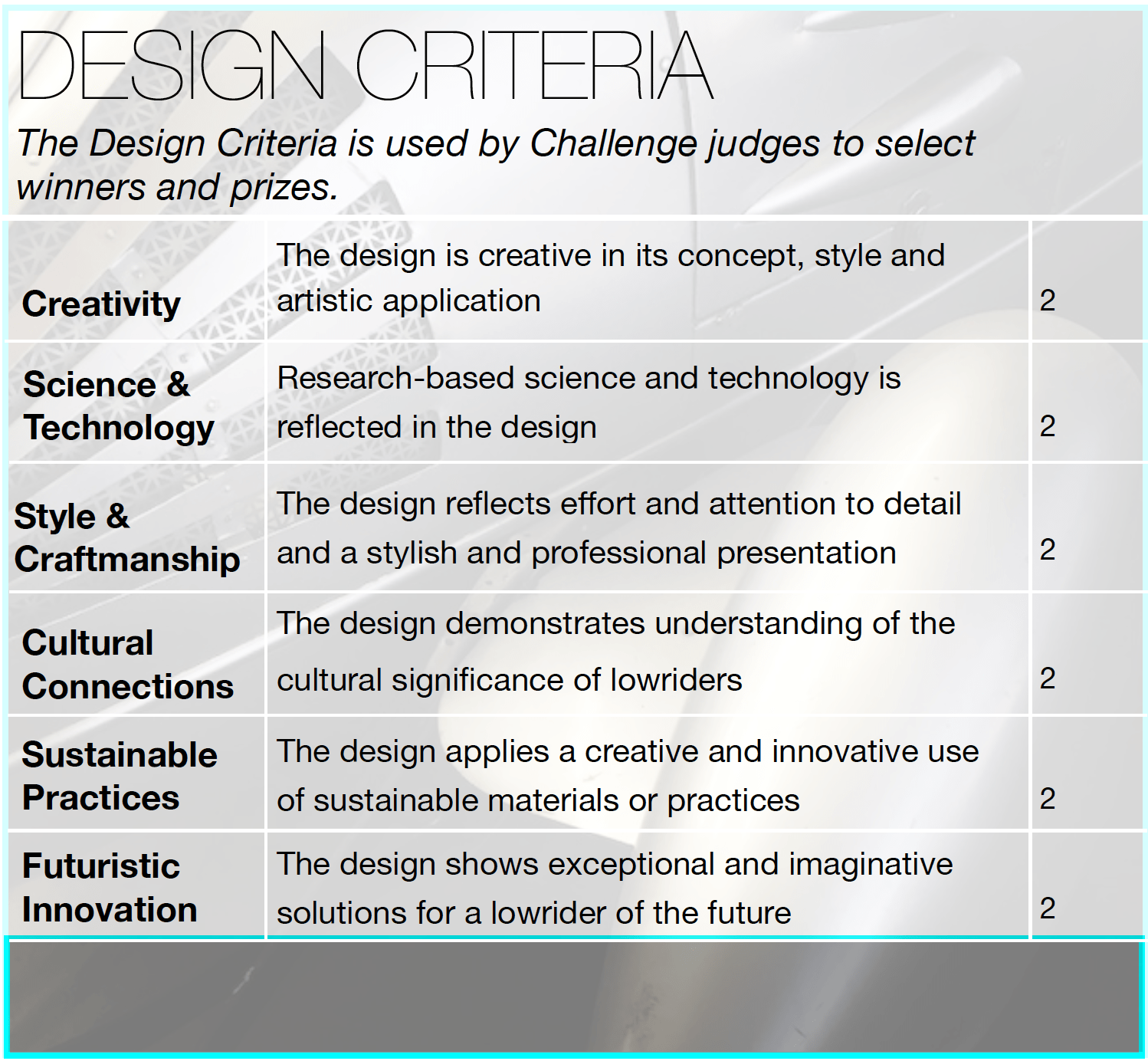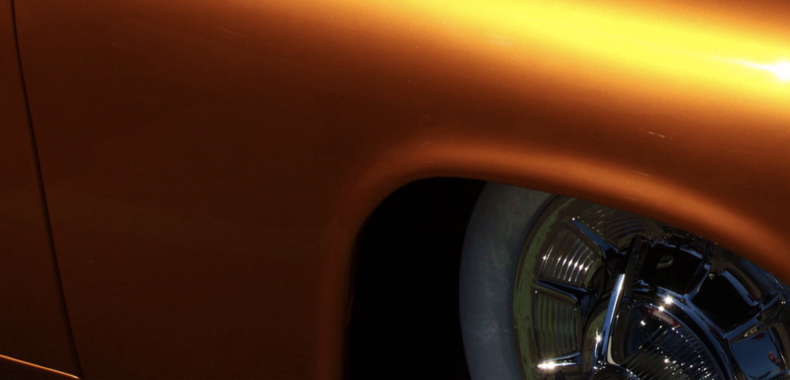Ready to get started? This section provides an overview, submission guidelines and rubric, as well as a printable activity guide to help you create a lesson plan or classroom project around the topic of Lowrider culture. Jump right to the Design Tool to take your students through the stages of the design process, culminating with a final drawing to be submitted to the Lowrider Design Challenge. The STEAM Wiki is a key component within the Design Tool. It contains curated links to all the resources and information about lowriders to inform the student’s designs. This is where we include information about future innovations to help the students imagine their lowrider of the future. The Low ‘N Slow Page is where students delve into the work of the featured lowrider artists and their creative process. The Interviews page takes you right to the short video clips of the lowrider artists who share their techniques and personal stories.
Through the Lowrider Design Challenge students will:
- Understand and appreciate the artistic and cultural value of lowrider culture and art.
- Research the science/technology behind lowriders of today, while imagining future innovations for the lowriders of tomorrow.
- Brainstorm and create iterations of the design based on their STEAM research.
- Get creative and design their ‘Lowrider of the Future’ which can be drawn by hand or computer generated.
- Write a design statement that communicates their concept and the science and technology behind the design.
- Become part of a county-wide challenge to create the most innovative lowrider design and a chance to win cash prizes.
Lowrider of the Future
The theme of the Lowrider Design Challenge is ‘Lowrider of the Future’. Students will delve into the history of the lowrider to understand its artistic and cultural significance, as well as the hydraulics and engineering, to inform their designs. At the same time they will be asked to research the latest scientific and technological innovations to ask, how might a Lowrider look in the future if they applied these new innovations to a lowrider design? How might it improve its performance, affect its sustainability, change its style? How might it influence its cultural connection?
Submission Guidelines
The final design of the Lowrider car must be created onto an 11″ x 17″ paper that we will provide. It can be hand drawn using any medium, or computer generated and then printed on to the paper. The final 11″ x 17″ student designs will be collected by our team on Monday September 25, 2021. The name of the student must be clearly printed on the print as follows: (School_student name_ grade)
A design statement must accompany the designs. These should be typed with a maximum word count of 300 words, exported as a PDF and submitted electronically. Each student file should be titled as follows:(School_student name_ grade). All student files should be placed in a folder for that school. The school folder should be named as follows: (Lowrider_School name_grade_year). The design statement should address the Design Criteria below that jurors will be looking for to evaluate the designs.

Next Generation Science Standards
The Lowrider Design Challenge is a cross-disciplinary art project designed to the Next Generation Science Standards (NGSS) in several categories. Visit our Standards page for a detailed explanation of how the STEMarts projects are standard-aligned. Check out the STEAM-Wiki under the search word ‘Standards” to access all the PDFs about engineering design in the NGSS. Our hope is that the process of designing a ‘Lowrider of the Future’ will provide a fun and creative platform to develop essential engineering design skills through imaginative futures thinking.
” Providing students a foundation in engineering design allows them to better engage in and aspire to solve the major societal and environmental challenges they will face in the decades ahead. We use the term “engineering” in a very broad sense to mean any engagement in a systematic practice of design to achieve solutions to particular human problems. Likewise, we broadly use the term “technology” to include all types of human-made systems and processes—not in the limited sense often used in schools that equates technology with modern computational and communications devices. Technologies result when engineers apply their understanding of the natural world and of human behavior to design ways to satisfy human needs and wants. (NGSS: NRC 2012, p. 11-12)”
NEXT GENERATION SCIENCE STANDARDS

Core Idea ETS1: Engineering Design
ETS1.A: Defining and Delimiting an Engineering Problem
ETS1.B: Developing Possible Solutions
ETS1.C: Optimizing the Design Solution
Lesson Guide
The Lowrider Design Challenge Lesson Guide provides everything you need to create a lesson plan and classroom project around the topic of Lowrider culture, art, technology, science and design for the future. Download the PDF to learn how to navigate the STEMarts Curriculum Tool and access all the tips, tools and resources.

Lowrider Design Challenge Guide
The Low ‘N Slow Lowrider Design Challenge Guide will help you get started with step by step instructions on how to use the STEMarts Curriculum Tool to create a lesson plan and access the submission guidlines and design criteria. Includes tips on how to use the STEAM Wiki which contains all the curriculum content to inspire and inform the students designs through curated links.
Download
